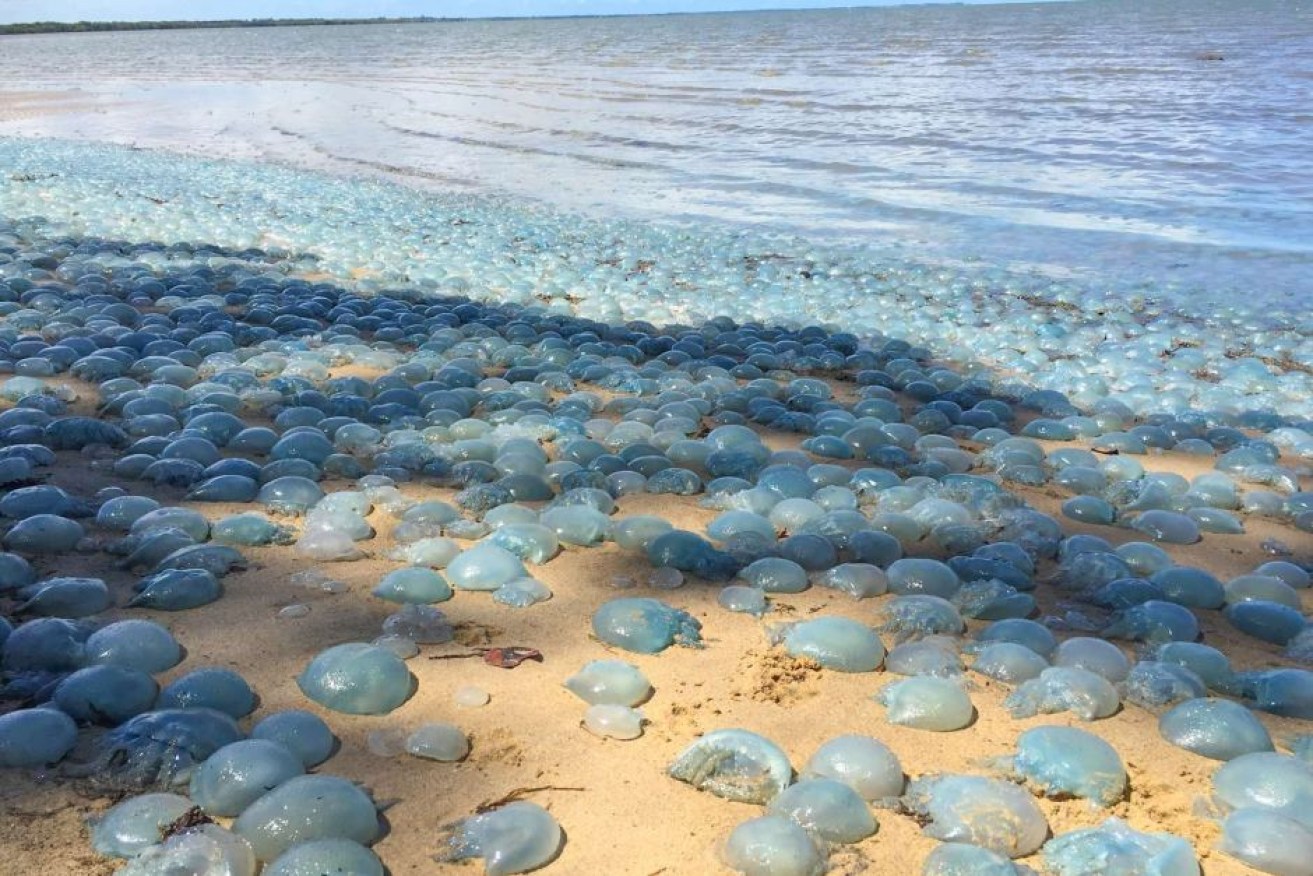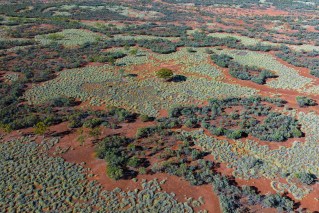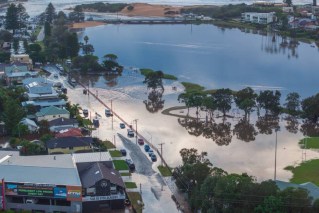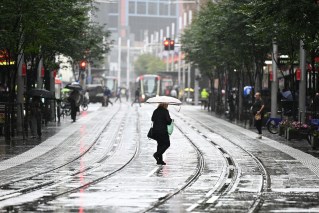‘Wallpaper of blue blubber jellyfish’ wash up on Queensland beach

The beaches of Deception Bay have been invaded with blue blubber jellyfish. Photo: Facebook: Charlotte Lawson
A beach north of Brisbane is covered in blue blubber jellyfish, with one marine biologist saying it is the biggest stranding she has ever seen.
There was no sand in sight at Deception Bay at the weekend when thousands of jellyfish stranded themselves, in what is known as a bloom.
Marine biologist Dr Lisa-Ann Gershwin, who specialises in jellyfish, said the bloom was the biggest she had seen in her 25 years of research.
“I can honestly say it’s the most incredible stranding I’ve seen anywhere – and I’ve seen a lot of strandings … just gobsmacking,” she said.
“Jellyfish bloom is part of their lifecycle and if the winds blow just right and if the water level falls with the tide, then they get stranded.
“We see jellyfish bloom, but not like this, this is jaw dropping.”
Dr Gershwin described the sight as “a wallpaper of jellyfish”.
“I’ve never seen them that close together,” she said.
“I can’t imagine what they would look like in the water, for them to have stranded that close together.”
Stranding not a concern for local ecosystem
The common blue blubber jellyfish, Catostylus mosaicus, grows to 35 centimetres in diameter and does not usually cause serious harm to humans.

The jellyfish line the beach at Deception Bay. Photo: Facebook: Charlotte Lawson
“They are really common in south-east Queensland, New South Wales and Victoria,” Dr Gershwin told ABC Radio.
“The stranding isn’t a great concern for the ecosystem as they will dry out and we won’t even know they’re there in a week.
“It’s a good thing for birds and turtles who will eat them.”
She believed the combination of northerly winds and tide conditions caused the jellyfish to bloom like this.
“They don’t beach themselves like some animals – jellyfish don’t do that,” Dr Gershwin said.
“They can’t breathe out of water, but they do need water around them to have oxygen diffused across their skin.
“They also need water to support their body so it doesn’t cave in on itself.”
-ABC








